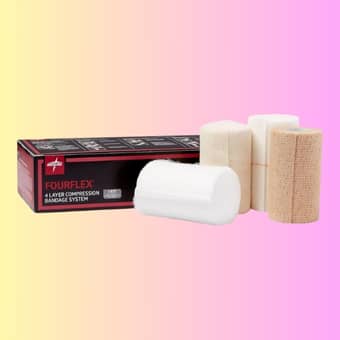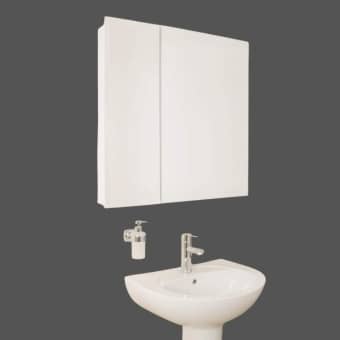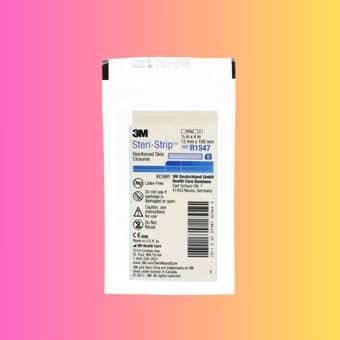At the start of your weight loss journey, know fiber’s role in your diet. Increasing fiber intake can help with satiety and digestion. But there are important things to consider. Your body may need time to adjust to higher fiber levels, and not all sources of fiber have equal quality. This guide will help you make smart choices about fiber. It will also maximize your weight loss efforts.

Table of Contents
Key Takeaways:
-
Introduce fiber into your diet in small amounts to prevent digestive discomfort.
-
Stay hydrated: Eating more fiber requires more water. It helps with digestion and prevents constipation.
-
Diverse Sources: Eat a mix of fiber-rich foods. Include fruits, vegetables, whole grains, and legumes for balanced nutrition.
I. Understanding Fiber
As you start your weight loss journey, understanding fiber is imperative. This indigestible part of plant foods can help your diet. It aids digestion and makes you feel full longer. Eating fiber-rich foods can improve your health and help you manage your weight.
1.1. Types of Dietary Fiber
-
Soluble fiber: dissolves in water, helping to lower blood cholesterol and glucose levels.
-
Insoluble Fiber: It doesn’t dissolve in water. It helps with digestion and regular bowel movements.
-
Functional Fiber: It’s added to foods. It’s from plants or made from plants. It’s good for health.
-
Whole Food Fiber: It’s in whole fruits, vegetables, legumes, and whole grains. It’s a natural fiber.
-
Prebiotic Fiber: Fermented by beneficial gut bacteria, it supports gut health and immunity.
Knowing these types of fiber will help you choose foods for your weight loss plan.
| Type of Fiber | Description |
| Soluble Fiber | Dissolves in water, regulates blood sugar and cholesterol levels. |
| Insoluble Fiber | Helps with bowel movement regularity and digestive health. |
| Functional Fiber | Added to foods, supports health benefits through enrichment. |
| Whole Food Fiber | Natural fiber from fruits, vegetables, legumes, and whole grains. |
| Prebiotic Fiber | Promotes beneficial gut bacteria for improved health. |
1.2. Benefits of Fiber for Weight Loss

A high-fiber diet can play a crucial role in weight loss. Fiber-rich foods are more filling. They can help reduce your calorie intake. Also, these foods need more chewing. They assist you in taking your time while eating, which allows you to feel satisfied in a shorter time.
Also, fiber in your diet boosts satiety and stabilizes blood sugar. It prevents spikes and crashes that often lead to unhealthy snacking. A high-fiber diet helps lower body weight and waist size. So, it is a useful part of your weight loss plan. Focusing on fiber may contribute to sustainable weight loss.
II. Tips for Increasing Fiber Intake
You can boost your fiber intake with some daily changes. Consider the following tips:
-
Start your day with a high-fiber breakfast, such as oatmeal or whole-grain cereal.
-
Snack on fruits, vegetables, and nuts instead of processed options.
-
Substitute refined grains for whole grains in meals.
-
Add legumes, such as beans and lentils, to salads and soups.
-
Increase fiber-rich foods over time to prevent digestive discomfort.
This will support a smoother transition to a fiber-rich diet.
2.1. Gradual Change Strategies

Change is key when increasing your fiber intake. To reduce digestive discomfort, increase fiber in small amounts over a few days or weeks. Begin with small portions of high-fiber foods, allowing your body to adapt. Make a habit of checking your feelings. Adjust your fiber intake based on your digestion. Increase it as your system adapts.
2.2. Fiber-Rich Foods to Include
To boost your fiber intake, eat a variety of fiber-rich foods. Choose fruits, vegetables, whole grains, legumes, nuts, and seeds. They provide fiber, plus important vitamins and minerals. Choose colorful foods like berries, greens, and sweet potatoes for a balanced diet.
Another great way to add fiber to your diet is to try versatile options. Quinoa can replace rice or pasta. Chia seeds can enrich smoothies or yogurt. Smoothies with spinach, banana, and flaxseeds are a quick way to get more fiber. Diversifying your fiber sources adds flavor and texture. It also boosts the benefits of a high-fiber diet.
III. Step-by-Step Guide to Adding Fiber
To add more fiber to your diet, follow this guide. It will make the transition smooth and enjoyable.
| Step | Action |
|---|---|
| 1 | Start with small increases, adding fiber-rich foods gradually. |
| 2 | Incorporate fruits, vegetables, whole grains, and legumes into meals. |
| 3 | Drink plenty of water to support your increased fiber intake. |
| 4 | Monitor your body’s response and adjust as needed. |
3.1. Daily Fiber Goals
Adults should aim for 25 to 30 grams of fiber daily. But, adjust this to fit your health needs and diet.
3.2. Meal Planning with Fiber

Planning high-fiber meals can boost your nutrition and keep you full longer.
Fiber-rich foods not only promote satiety but also provide crucial nutrients. When planning meals, try to add whole grains, beans, fruits, and vegetables to each dish. Aim to add a source of fiber at breakfast, lunch, and dinner. For example, have oatmeal with berries for breakfast. For lunch, enjoy a salad with mixed greens, chickpeas, and colorful veggies. Intentional meal choices can boost your fiber intake. They can also help your weight loss journey.
IV. Factors to Consider Before Adjusting Fiber
Once again, making changes to your fiber intake requires careful consideration. Before exploring a fiber-rich diet, take the following factors into account:
-
Your current fiber consumption.
-
Your health condition.
-
Any existing dietary restrictions
-
Your lifestyle and activity level.
The adjustments you make should provide much support for your weight loss journey.
4.1. Individual Dietary Needs
Before changing your fiber intake, assess your diet. Make sure the change meets your health goals and nutritional needs.
4.2. Potential Digestive Issues

Dietary changes can cause digestive discomfort. This is especially true with a rapid increase in fiber intake.
A sudden increase in fiber may cause gas and bloating. Your digestive system needs to adjust. To prevent digestive issues, increase the amount of fiber in your meals over time. Don’t overwhelm your system by doing it all at once. Staying hydrated and eating fiber-rich, balanced foods can help. They can ease the transition to a high-fiber diet and prevent discomfort.
V. Pros and Cons of High-Fiber Diets
Unlike many fad diets, a high-fiber diet has benefits and some drawbacks. Below is a summary of the pros and cons you should consider.
| Pros | Cons |
|---|---|
| Promotes satiety, helping you feel fuller longer. | May cause digestive discomfort if increased too quickly. |
| Supports healthy digestion and regular bowel movements. | Can lead to bloating or gas in some individuals. |
| May aid in weight management by reducing calorie intake. | May require increased water intake, which some may overlook. |
| Reduces risk of chronic diseases like heart disease. | Finding fiber-rich foods can be challenging and time-consuming. |
| Encourages the consumption of fruits and vegetables. | Possibly hard to accommodate in a busy lifestyle. |
5.1. Advantages of Fiber for Weight Management
Pros: High-fiber foods tend to be lower in calories while providing volume. As a result, you can enjoy larger portions without exceeding your calorie limits. Fiber slows digestion. This helps regulate blood sugar and prevents sudden hunger pangs. So, it is an effective tool for weight management.
5.2. Possible disadvantages to watch for.

To incorporate fiber, you should understand the potential downsides. Increasing fiber in your diet is important. But doing it in a rushed manner can cause stomach pain.
Cons: Common issues include bloating, gas, or cramping. This is especially true if you’re not used to high-fiber foods. It’s vital to increase your fiber intake in small increments. Also, drink plenty of water to cut these effects. Not doing so can make your weight loss journey less enjoyable.
The Benefits of Adjusting to Fiber: What You Need to Know
So, before you raise your fiber intake for weight loss, know this. Increasing it over time is important to avoid digestive issues. Hydrate well. Fiber needs a lot of water to work well. Eat a variety of fiber sources. Focus on both soluble and insoluble fibers for the best health benefits. Monitoring your body’s responses will help you adjust your weight loss efforts. It will also promote your digestive health.
FAQ
Q: What is fiber, and why is it important for weight loss?
Fiber is a type of carbohydrate that the body cannot digest. It helps with weight loss. It boosts fullness, cuts hunger, and stabilizes blood sugar. Eating more fiber can help manage your appetite. It supports healthy digestion, too. This makes it easier to maintain a healthy weight.
Q: How should I start increasing my fiber intake?
Introduce high-fiber foods into your meals in small amounts. These include fruits, vegetables, whole grains, legumes, and nuts. It’s best to do this over a week or two to give your digestive system time to adjust. Introducing fiber in large amounts can cause discomfort, bloating, or gas. So, take your time to avoid these issues.
Q: How much fiber should I aim for in my diet?
The recommended daily intake for fiber is about 25 grams for women and 38 grams for men. But individual needs may vary based on age and physical activity levels. To meet your fiber goals, read nutrition labels. Also, consider your diet.
Q: Are there any side effects of increasing fiber in my diet?
Some may feel digestive discomfort, like bloating or gas, from a rapid increase in fiber. To reduce these effects, increase fiber in small increments. Also, drink plenty of water to help the fiber move through your digestive system. If symptoms persist, consult a healthcare professional for guidance.
Q: Which fiber-rich foods are the best choices for weight loss?
High-fiber foods that can help with weight loss include beans, lentils, oats, chia seeds, berries, apples, broccoli, and whole grains. Eating a mix of these foods can help you meet your fiber goals. They also provide vital nutrients for good health.
Last Updated on August 8, 2025 by Holistic Healths






One thought on “What should you know before adjusting to fiber for effective weight loss?”